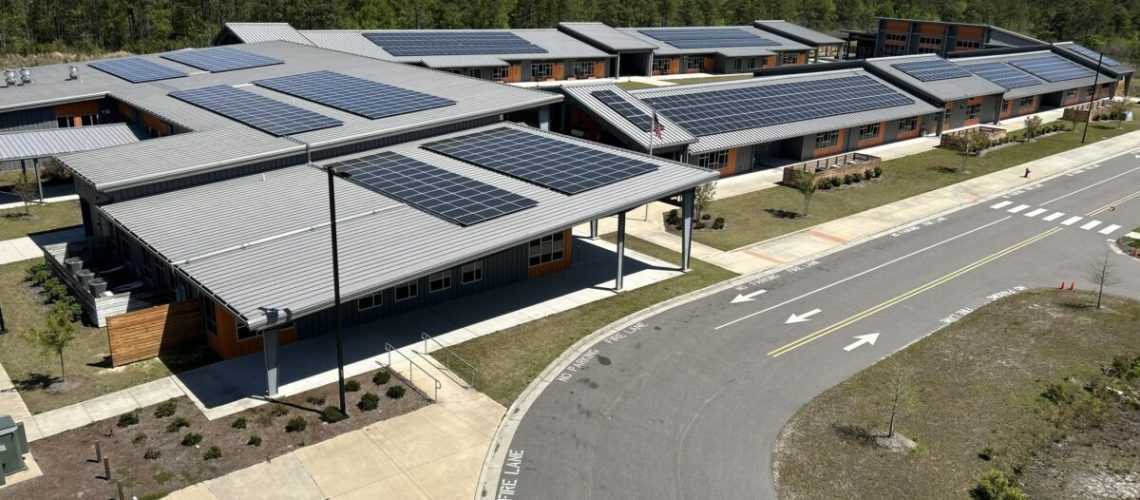An estimated $1.1 million in savings will be provided by the 300 kW array that tops several roofs on a public charter school in Wilmington, North Carolina.
The Girls Leadership Academy of Wilmington (GLOW), N.C. demonstrated leadership in clean energy adoption, adding a 300.3 kW solar project across several roofs.
Cape Fear Solar Systems installed the project, which is comprised of 660 solar panels on three campus buildings. The project was made possible by supporters of the academy and by funds made available through the Duke Energy Solar Rebate Program.
“As a local company, we are committed to helping our community transition towards a more sustainable future, and this solar power installation is a significant step in that direction,” said Robert Parker, chief operating officer, Cape Fear Solar Systems.
The project is expected to save GLOW Academy $33,000 in utility bill costs in the first year and $1.1 million over the 25-year life of the system. This makes more funds available to support educational programs.
The project is expected to generate 410,000 kWh annually. The carbon emissions abated by the project are estimated to be equivalent to taking 65 combustion engine vehicles off the road, powering 57 homes, or sequestering carbon through the planting of 4,800 trees.
“Not only will solar help us save money on our energy bills, but it will also provide a valuable learning opportunity for our students about the importance of sustainability and renewable energy,” said Todd Godbey, chief executive officer, GLOW Academy.
Cape Fear Solar Systems, established in 2007, has designed and installed nearly 4,500 local solar projects to date. The company offers turnkey systems including PV arrays, home batteries, and EV charging stations for both residential and commercial accounts.
Since 2015, solar for schools has tripled, and now 9% of schools source electricity from PV, said a report by Generation180. Energy is second only to teacher salaries when it comes to cost, according to the National Renewable Energy Laboratory, and U.S. schools spend more than $6 billion a year on the line item.
“We are striving for all schools and communities, regardless of their size, geography, or wealth, to have access to clean and affordable power,” said Tish Tablan, lead report author and director of Generation180’s Solar For All Schools Program.
The report found the U.S. is home to 8,409 solar schools, with over 6.1 million students in attendance. Across the nation, over 1.6 GW of solar capacity has been installed for schools, enough to power 300,000 homes annually.
Generation180 runs a national campaign for solar advocacy, and offers a toolkit as a step-by-step grassroots organizing guide. Once the school district has buy-in from the community, decision makers can use Generation180’s how-to guide for going solar.



